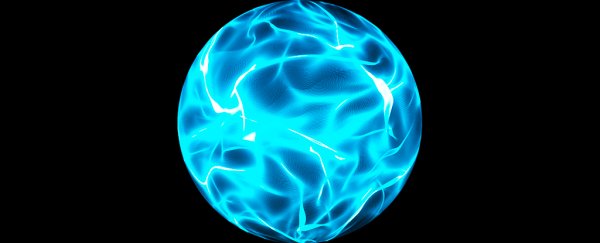As far as mysteries of nature go, ball lightning is one of the more perplexing. It seems there are as many potential explanations as there are sightings, but in spite of decades of intense interest, none stand out as a clear winner.
One of the weirder hypotheses claims these glowing balls are nothing more than light trapped inside a sphere of thin air. A new paper has added fresh details to the proposal, setting physical parameters on what such a light bubble might be like.
For centuries, people have recorded accounts of grape-fruit-sized orbs of light moving slowly a short distance above the ground, often in the middle of an electrical storm, persisting for maybe 10 seconds or so before silently winking out of existence.
Occasionally there is an added effect or two. Some have been said to pass through the glass pane of a closed window. Others might go out with a bang, or even leave behind the stench of sulphur as they vanish.
Over a decade ago, Vladimir Torchigin from the Russian Academy of Sciences came to the conclusion that the atmospheric phenomenon we call ball lightning isn't lightning at all, but rather photons ricocheting inside an air-bubble of their own making.
Whatever ball lightning happens to be, though, history isn't short on eyewitness reports.
Pulling apart myth from facts isn't easy, however, and in the past they were treated with a generous dose of scepticism. Today, researchers are cautiously optimistic that there's probably something to the multitude of observations.
In the 1970s, ball lightning researcher Stanley Singer suggested there were three essential features any successful model explaining the phenomenon had to account for; the duration of ball lightning, its floating motion, and its sudden disappearance.
Just a few years ago, an alleged event of ball lightning in China was by chance captured on a spectrograph following a lightning bolt striking the ground, providing researchers with a breakdown of its electromagnetic spectrum.
The research backs up an explanation by University of Canterbury engineer John Abrahamson, who suggested the glowing air could be the result of vaporised ground material being pushed up by a shockwave of air.
Other suggestions imagine clouds of charge-repulsing ions collecting on an insulator such as a glass sheet, providing a basis for the long life spans as well as drifting and 'bouncing' movements.
Torchigin's idea is as simple as it is highly speculative. It has nothing to do with charged ions, and everything to do with the intense shower of photons shed by a bright flash inside our atmosphere.
As any particle absorbs and emits electromagnetic radiation, there is a recoil referred to as the Abraham-Lorentz force. In theory, light spilling from a lightning strike causes air particles to jiggle as they absorb and transmit electromagnetic radiation.
This force isn't all that impressive under most circumstances, as even Torchigin admits by stating, "[t]hese forces are extremely small for conventional intensities of light, and their action is rightly ignored".
But the extreme intensity of a lightning strike isn't your normal flash. What's more, these optical forces could potentially be magnified considerably under the right conditions.
Those 'right conditions', according to Torchigin, involve the generation of a thin layer of air that refracts the light back in on itself.
A thin layer of air – not unlike the film of a bubble – could effectively focus light like a lens, intensifying the light enough to shove air particles into a boundary and produce a long-lived bubble, concentrating photons for seconds at a time.
Not all ball lightning 'embryos' would be successful, fading immediately for want of light or a sufficiently closed shell. But those that did hang around would look spectacular as they bobbed a haunting path through virtually any transparent medium.
The idea has been kicked around by Vladimir and his Russian Academy of Sciences colleague Alexander Torchigin in dozens of papers over the years.
Vladimir's most recent discussion on the topic combines numerous assumptions with physical models to pin down the light density and air pressure required to produce a suitable refraction index.
This might not explain some of the more violent endings to ball lightning, or the spectroscopic observations like those captured in China, or even necessarily the sulphurous smells.
But it does provide some numbers that could lead to necessary experiments that either rule out the hypothesis or give it an empirical backbone.
It's entirely possible Torchigin's idea is itself a lot of hot air, of course. But until we have a consensus on what might be behind those spooky, glowing spheres, it'll remain one of the more interesting contenders for a ball lightning theory.
This research was published in Optik.
